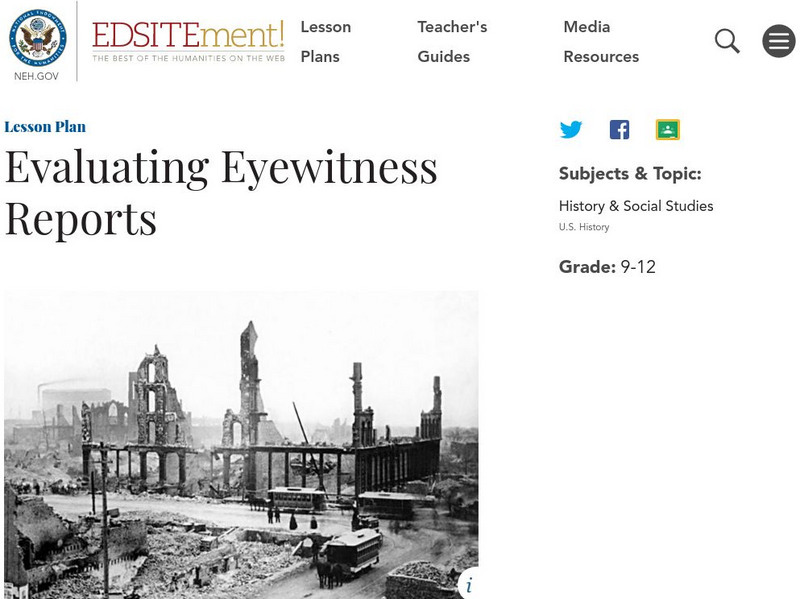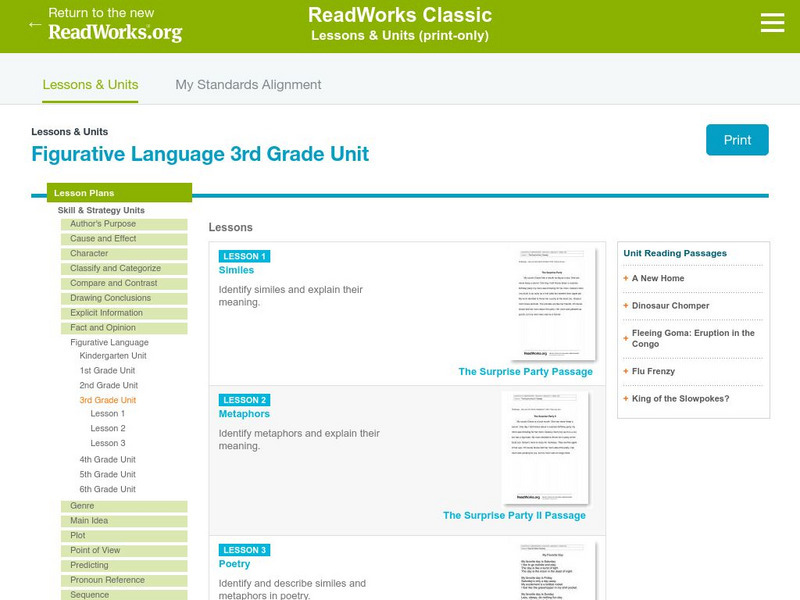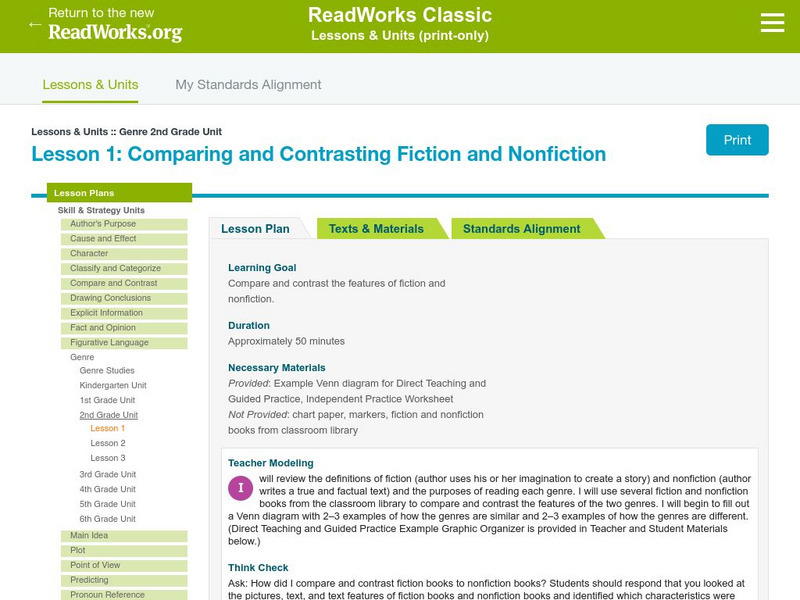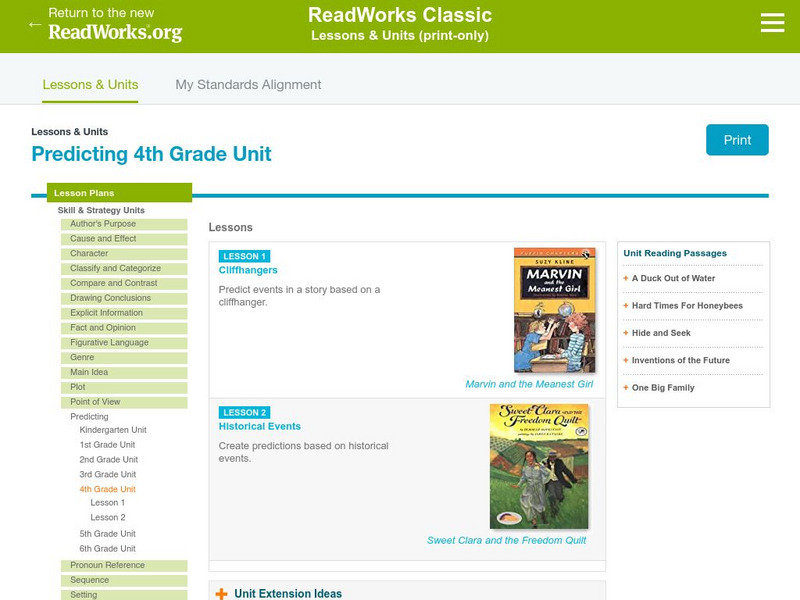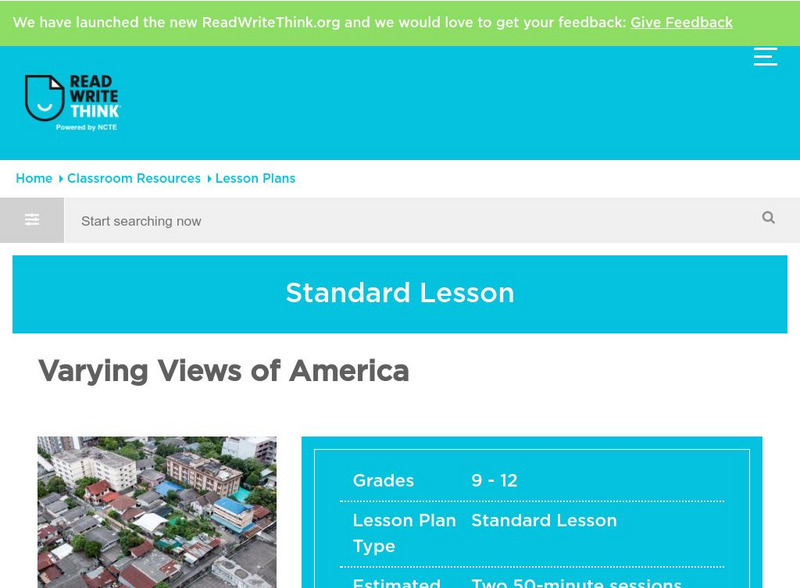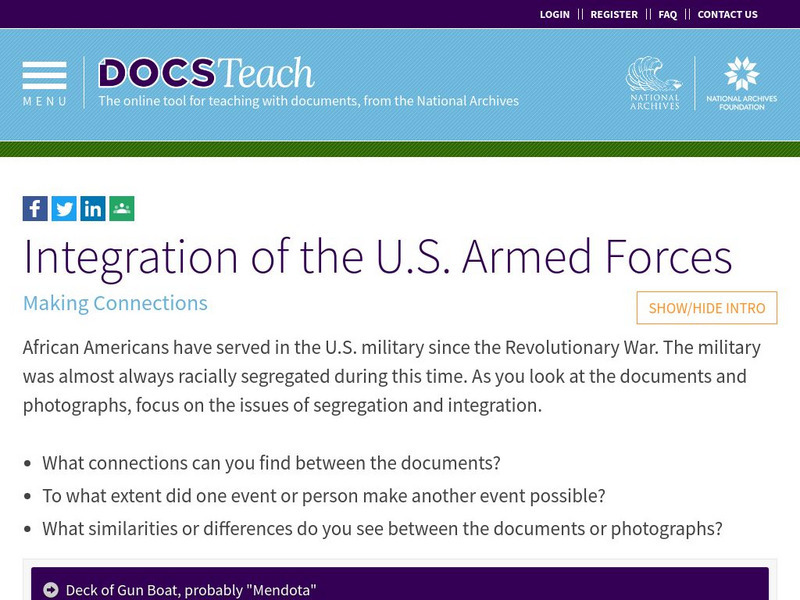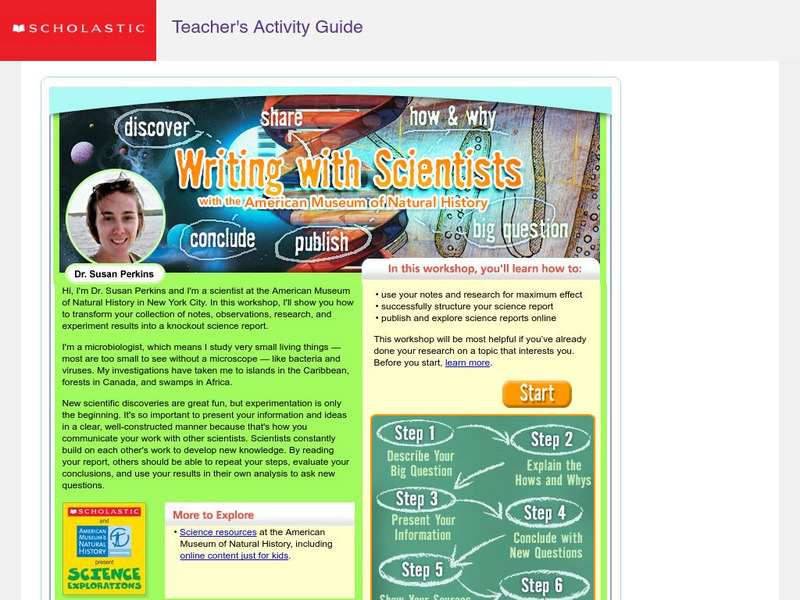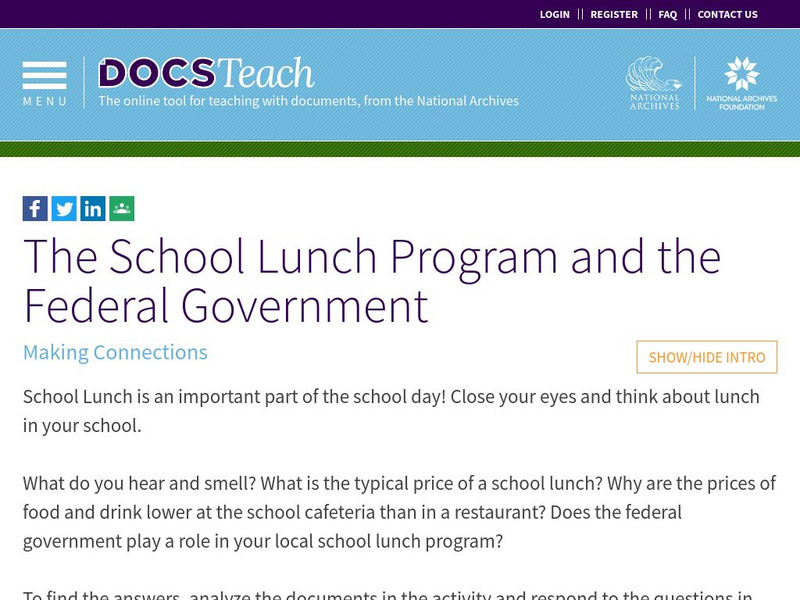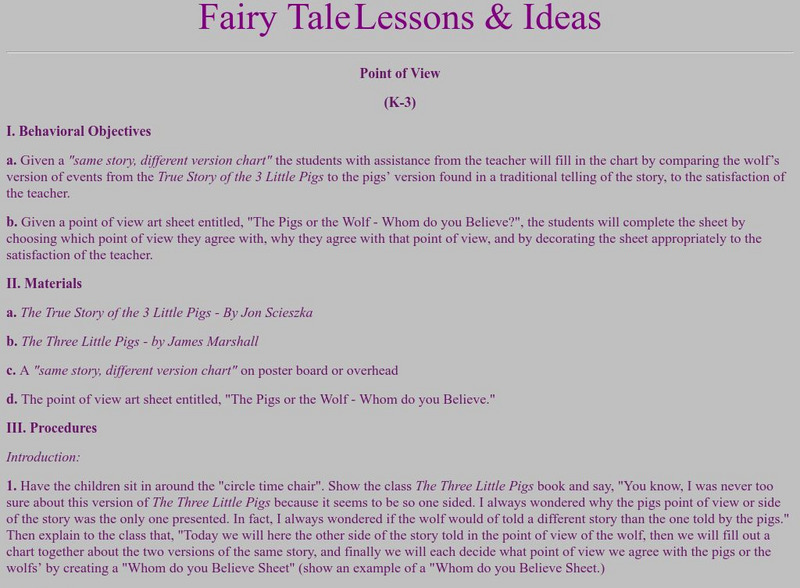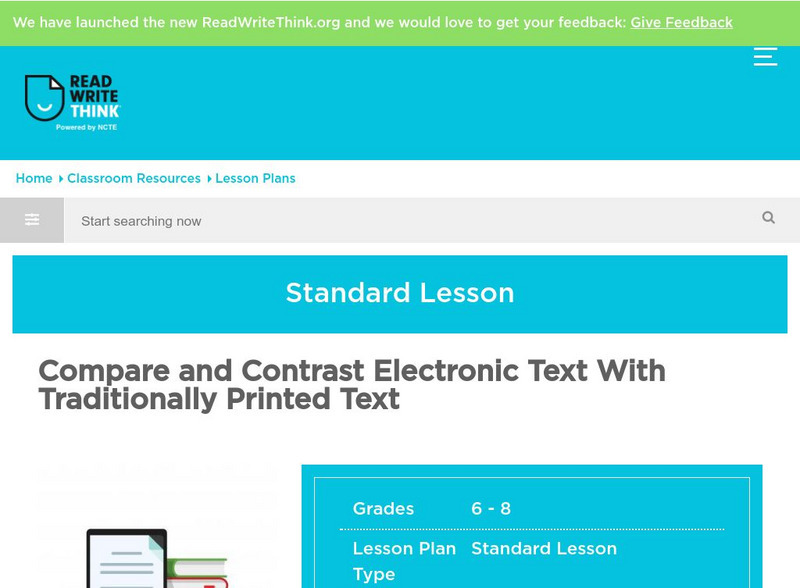Harvard University
Harvard College Writing Center: How to Do a Close Reading
A brief explanation of the tasks involved in doing a close reading in preparation for writing. This writer breaks the process into three steps which involve annotating the text, looking for patterns, and asking questions of the text.
Other
Laflemm.com: Reading Resources: Inference
This page has reading tips and exercises that explain inferences. There is an answer key for students to check their work. RL.9-10.1, RL.11-12.1, RI.9-10.1 & RL.11-12.1 textual evidence and inferences
National Endowment for the Humanities
Neh: Edsit Ement: Evaluating Eyewitness Reports
In this instructional activity, learners practice working with primary documents by comparing accounts of the Chicago Fire and testing the credibility of a Civil War diary.
University of California
Ucla: Cultural Studies, and Multiculturalism
In the last third of this professor's article from UCLA dealing with how media culture helps to "forge our very identities," he considers MTV as a way of making cultural studies "multiperspectival" and therefore more varied and valid.
Read Works
Read Works: Explicit Information 1st Grade Unit
[Free Registration/Login Required] A two-lesson unit in which students learn how to identify explicit information in both fiction and non-fiction texts. The lessons utilize the books Frogs by Gail Gibbons and Stellaluna by Janell Cannon....
Read Works
Read Works: Compare and Contrast 3rd Grade Unit
[Free Registration/Login Required] A three-lesson plan unit on comparing and contrasting through which students learn how to compare two items using key terms, compare and contrast two non-fiction texts on similar topics, and compare and...
Read Works
Read Works: Figurative Language 3rd Grade Unit
[Free Registration/Login Required] In this three-lesson unit, students use the book If You Hopped Like a Frog by David Schwartz and some additional short texts to learn to identify and understand the use of simile and metaphor in fiction...
Read Works
Read Works: 2nd Grade Lesson: Compare/contrast Genres
[Free Registration/Login Required] A lesson in which students use fiction and nonfiction books from a classroom library to identify the similarities and differences between fiction and nonfiction and to create a Venn diagram...
Read Works
Read Works: Predicting 4th Grade Unit
[Free Registration/Login Required] A two-lesson unit focused on students making predictions using details from the text found in Marvin and the Meanest Girl by Suzy Kline, and making predictions within a historical context in the book...
Read Works
Read Works: Vocabulary in Context 4th Grade Unit
[Free Registration/Login Required] Students explore various strategies for using context clues to determine the meaning of unknown words. With free login, users have access to the passage and other teaching materials used in this...
Read Works
Read Works: Main Idea 1st Grade Unit
[Free Registration/Login Required] Students learn to use titles and supporting details in both fiction and non-fiction texts in order to identify the main idea of the book in this three-lesson unit. The lessons utilize the books Animal...
ReadWriteThink
Read Write Think: Poetry: Varying Views of America
Lesson allows young scholars to examine the various views of American perspective through studying three poems by diverse poets: "I Hear America Singing" by Walt Whitman, "I, Too, Sing America" by Langston Hughes, and "On the Pulse of...
US National Archives
Docsteach: Integration of the u.s. Armed Forces
Students will draw upon the visual and textual data presented in photographs and documents to gain an understanding of the participation of African Americans in the U.S. Armed Forces and of changes in American military policy regarding...
Library of Congress
Loc: History Firsthand: Primary Source Research
History Firsthand has been designed to provide elementary children with experiences which enable them to begin understanding primary sources. Students move from personal artifacts to the vast American Memory collections and learn how...
Scholastic
Scholastic: Writing With Scientists With the American Museum of Natural History
Follow this six-step method and you'll have a good understanding of what a good scientific research paper involves and how it is organized. There are plenty of samples for you to look at. This explanation is also very helpful for...
CommonLit
Common Lit: Women in Ancient Rome
CommonLit.org is a wonderful resource to use in a Language Arts classroom. Each story or article is accompanied by guided reading questions, assessment questions, and discussion questions. In addition, students can click on words to see...
US National Archives
Docsteach: The School Lunch Program and the Federal Government
Students will draw upon the visual and textual data presented in photographs and documents to gain an understanding of how the federal school lunch program is a direct result of the Great Depression, how it became a permanent part of the...
Rock and Roll Hall of Fame
Rock & Roll Hall of Fame: Sti Lesson 38: Robert Plant and Jimmy Page
Many adolescent boys are consumed by theLed Zeppelinsong 'Stairway to Heaven.' The analysis of this song can be used to interest students in the music of the Renaissance minstrels. It will also serve as a means of making students aware...
Gilder Lehrman Institute of American History
Gilder Lehrman Institute: History Now: When the Past Speaks to the Present: Thomas Jefferson,sally Hemings
[Free Registration/Login Required] An article about the need for careful interpretation of historical sources, especially in the area of slavery.
Library and Archives Canada
Nlc: Defining Primary and Secondary Sources
Libraries and archives hold documents and books that can be used for your research projects. Learn how to divide and identify them into primary and secondary sources in this tutorial.
Other
Teaching Heart: Fairy Tale Lessons & Ideas
Geared toward grades K-3--offers objectives, materials, procedures, discussion questions and evaluations. Online lesson plans for introducing and teaching basic literary criticism skills.
ReadWriteThink
Read Write Think: Text Features: Non Fiction [Pdf]
Compare the printed page to an electronic web page and use this activity to discuss the similarities and differences. A cross-curricular tie-in with ecosystems. Could easily be adapted to another subject area.
ReadWriteThink
Read Write Think: Compare/contrast Electronic Text With Traditionally Printed Text
Lesson allows for middle school young scholars who are familiar with researching electronic sources to gain a deeper understanding of the benefits of online resources versus traditional print.
E Reading Worksheets
E Reading Worksheets: Inferences Worksheets
In this learning module, students will learn more about making inferences. Worksheets are provided to reinforce the skill of making inferences. This module is designed to support Tier I, Tier II, and Tier III students.
Other popular searches
- Close Textual Analysis
- Textual Analysis Text Features
- Textual Analysis of Poems
- Textual Analysis of Tam
- Textual Analysis of Tkam




